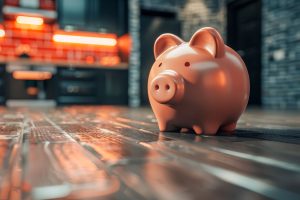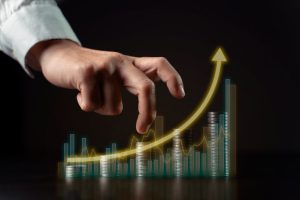Fed chair Jay Powell just poured cold water on the “no landing” crowd hoping to avert a U.S. recession and rally stocks to fresh record highs this year.
After two days of grilling before Congress, investors have been reminded (again) that the Fed chief still sees inflation as a persistent, pernicious threat.
Stocks and bonds took notice Wednesday, as both sold off amid surging short-term rates — leaving the major indices underwater for the week as of the close.
“If the totality of the data were to indicate that faster tightening is warranted, we would be prepared to increase the pace of rate hikes,” said Powell before the Senate.
And with two weeks to go until the next Fed meeting, markets are now expecting exactly that. Bonds and derivatives are pricing in a more hawkish outcome — expecting the Fed to lift its benchmark rate 50 basis points instead of 25 basis points.
Since Monday’s settlement, the U.S. 2-year Treasury-Note yield has surged 18 basis points to 5.06% — the highest level since 2007. It also deepened its inversion over the 10-year yield, with the spread reaching negative 108 basis points (or -1.08 percentage points) — the highest since the early 1980s when Paul Volcker was the Fed chair fighting a similar battle over price inflation.
Under normal conditions, interest rates of longer-term loans or bonds (the cost of money) are expected to be more expensive than their shorter-term counterparts, as risk is higher on the long end. But this changes when the Fed starts stamping out animal spirits, lifting short-term rates to restrict the creation of credit and eventually choke off growth.
While the magnitude, or depth, of a yield curve inversion isn’t necessarily predictive of a deeper, or longer recession, there are a host of other indicators in the bond market that are sounding alarm bells.
Former bond trader and CEO of TheMacroCompass.com Alfonso Peccatiello recently joined Yahoo Finance Live to offer his insights.
Peccatiello notes that the bond market expects the Fed to fight inflation and remain tight, with interest rates well over 5% a year from now. “That cannot happen if a recession is unfolding. The Federal Reserve will be forced to cut interest rates,” he said.







